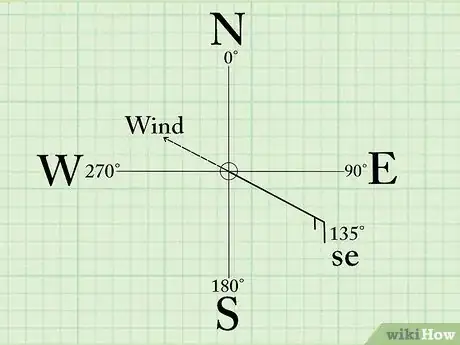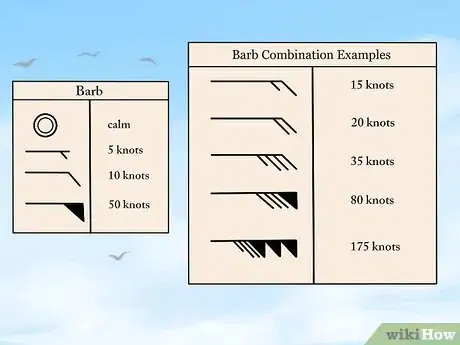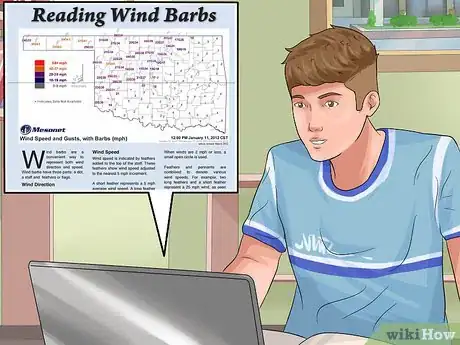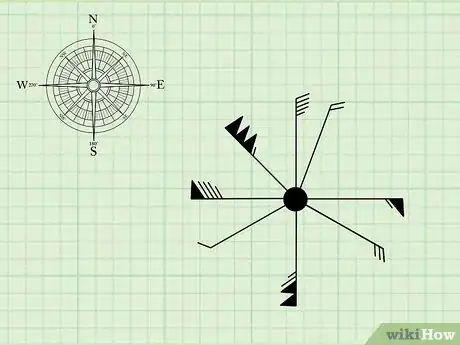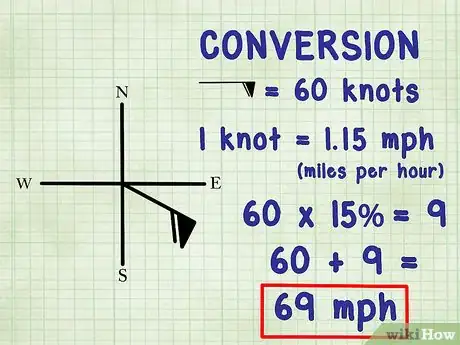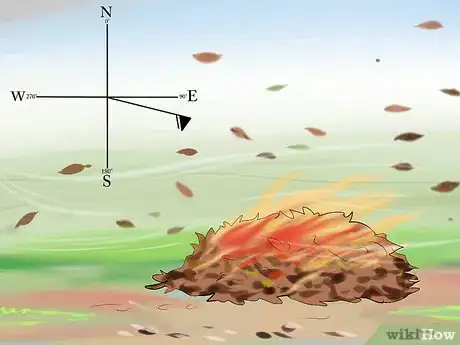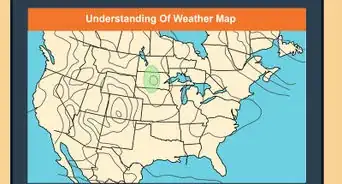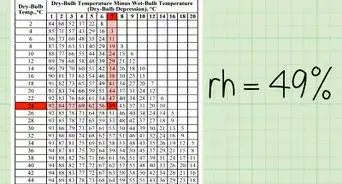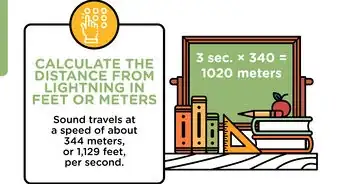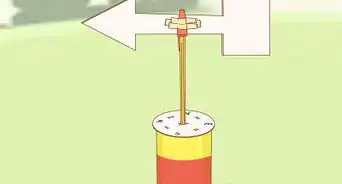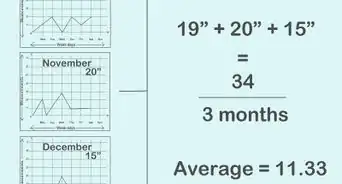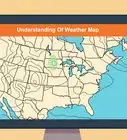This article was co-authored by Bess Ruff, MA. Bess Ruff is a Geography PhD student at Florida State University. She received her MA in Environmental Science and Management from the University of California, Santa Barbara in 2016. She has conducted survey work for marine spatial planning projects in the Caribbean and provided research support as a graduate fellow for the Sustainable Fisheries Group.
wikiHow marks an article as reader-approved once it receives enough positive feedback. In this case, several readers have written to tell us that this article was helpful to them, earning it our reader-approved status.
This article has been viewed 164,791 times.
Wind barbs are simple visual presentations of wind speed from a given direction. Use this tool to figure out which way the wind is blowing, and at what speed. Meteorologists use these simple diagrams to interpret the current weather, to predict future conditions, and to communicate changing trends to the public. In order to read wind barbs, you'll need to learn what the various lines and measurements mean.
Steps
Reading the Barbs
-
1Read the wind direction. The "flagpole" or directional vector of a wind barb shows you which way the wind is blowing. Make sure that north is oriented up. Just like a map or a compass rose, a wind barb plot is typically drawn with north at 0° and south at 180°. You can learn the direction of the wind by reading the angle of the barb vector in degrees. The dotted end of a wind barb staff shows where the wind is going, while the top or "feathered" end shows where the wind is coming from.[1]
- A wind barb vector that points to 135°, in the bottom-right quadrant of the plot (as illustrated above), indicates that the wind is blowing from the southeast.
- A wind barb vector at 270°, with the barbed end to the left of the graph at a right angle to north, is blowing from due west.
-
2Gauge wind speed. You can tell how hard the wind is blowing by looking at the "barb," line, or symbol at the end of each wind direction vector. Wind barbs use a kind of tallying system, and each distinct shape/line length denotes a different speed.
- A small, open circle indicates that the winds are calm.[2] This usually means that the wind speed is less than 1.74 knots (2 mph).[3]
- A single short line (half line) or "feather" represents 5 knots (5.75 mph) of wind speed.
- A single long line (full line) or "feather" represents 10 knots (11.50 mph).
- A fully blackened triangle, "pennant," or "flag" on the barb represents 50 knots (57.50 mph) of wind speed.[4]
Advertisement -
3Read barb combinations. If the wind speed is anything other than 5 knots (5.75 mph), 10 knots (11.50 mph), 15 knots (17.26 mph), 20 knots (23.02 mph), or 50 knots (57.50 mph), then you will need to read the speed from a combination of symbols. The symbols should begin with the highest relevant barb, at the end of the wind vector. Thus: if the wind speed is greater than 50 knots (57.50 mph), then the tally will begin with a black triangle. If it is less than 50 knots (57.50 mph), then the tally will begin with a line.[5]
- Two full lines in parallel would represent 20 knots (23.02 mph) of wind speed. One full line and one half line would represent 15 knots (17.26 mph). Three full lines and one half line would represent 35 knots (40.28 mph).
- One black triangle and three full lines would represent 80 knots (92.06 mph) of wind speed. Three black triangles, two full lines, and one half line would represent 175 knots (201.39 mph).
Understanding Weather Patterns
-
1Find wind barbs for your area. Run a web search for "wind barbs [your area]" or visit the website for a local weather station.[6] Read the wind direction that the wind barbs show. The direction of the main line of the wind barbs shows you the direction from which the wind is coming.
- Remember: the top or "feathered" end of the wind barb staff shows where the wind is coming from while the dotted end of a wind barb staff shows where the wind is going.
-
2Overlay wind barbs onto a compass or another orientating guide. In order to interpret wind direction, you will need to know which way is north. Wind barbs are usually provided within a directional context – but if not, make sure you orient them with north at the top.[7]
-
3Convert wind speed from knots. Wind barbs almost always display wind speed in terms of knots. However, it may come in handy to know the wind speed in another unit of velocity. One knot is equal to 1.15 miles per hour (mph) and 1.9 kilometers per hour (kph).[8] In order to calculate miles per hour, simply add 15% to the value in knots.[9]
- 60 knots to mph: 15% of 60 is 9. 60+9 = 69 . Thus, 60 knots is equivalent to 69 mph.
-
4Use wind barbs to evaluate wind safety. When you know how fast the wind is going, you can apply the measurement to various safety measures.[10] Notably, this includes burn bans and other effective fire prevention strategies.
- Wind barbs can also be helpful to mariners navigating the seas.
Community Q&A
-
QuestionWhat maps are used to show wind barbs?
 Community AnswerWeather charts depicting outlines of countries or states are used for weather depictions, including wind barbs. They are not colored. Maps have details of places, topography, etc, while charts have basic features only.
Community AnswerWeather charts depicting outlines of countries or states are used for weather depictions, including wind barbs. They are not colored. Maps have details of places, topography, etc, while charts have basic features only. -
QuestionHow do I read the wind direction?
 Community AnswerThe wind direction is always flowing toward the end of the barb where the circular dot is and from the end where wind speed indicators (the lines and triangles described in the article) are affixed.
Community AnswerThe wind direction is always flowing toward the end of the barb where the circular dot is and from the end where wind speed indicators (the lines and triangles described in the article) are affixed. -
QuestionHow do I draw less than 5 knots?
 Community AnswerA combination of long/short barbs and pennants indicate the speed of the wind in station weather plots rounded to the nearest 5 knots. So, 0-2kts wind speed rounded to 0kts, 3-5kts rounded to 5kts.
Community AnswerA combination of long/short barbs and pennants indicate the speed of the wind in station weather plots rounded to the nearest 5 knots. So, 0-2kts wind speed rounded to 0kts, 3-5kts rounded to 5kts.
References
- ↑ https://www.mesonet.org/images/site/Wind%20Barb%20Feb%202012.pdf
- ↑ http://ww2010.atmos.uiuc.edu/(Gh)/guides/maps/sfcobs/wnd.rxml
- ↑ https://www.mesonet.org/images/site/Wind%20Barb%20Feb%202012.pdf
- ↑ https://www.mesonet.org/images/site/Wind%20Barb%20Feb%202012.pdf
- ↑ https://www.weather.gov/hfo/windbarbinfo
- ↑ https://www.mesonet.org/images/site/Wind%20Barb%20Feb%202012.pdf
- ↑ https://a.atmos.washington.edu/wrfrt/descript/definitions/windbarbs.html
- ↑ http://ww2010.atmos.uiuc.edu/(Gh)/guides/maps/sfcobs/wnd.rxml
- ↑ http://weather.rap.ucar.edu/info/about_windbarb.html
About This Article
To read wind barbs, align the wind barb so north is pointing straight up, and look at the barb vector, which should have an arrow point on one end and feathers or barbs on the other. The angle of the barb vector shows the direction the wind is blowing, with the barbed end pointing to where the wind comes from, and the arrow pointing to where the wind is going. If the barbed end of the line is a small, open circle, winds are calm. A single short line indicates 5 knots of wind speed, a single long line represents 10 knots, and a fully black pennant represents 50 knots. Keep reading to learn tips from our reviewer on how to convert wind speed from knots!
